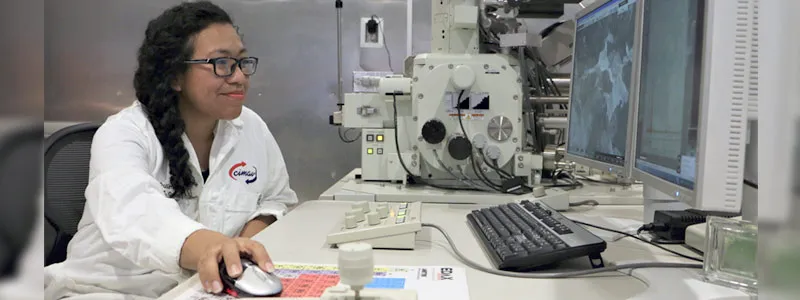Dr. Berenice Domínguez Cruz, a researcher attached to the Carta Program of the National Council of Science and Technology (Conacyt), was distinguished with one of the five scholarships for women in the science L'Oréal-Unesco-Concyt-AMC 2018 for its contribution to developmentof electronic olfates for the evaluation of diabetes mellitus through breath.
An electronic smell - also known as electronic nose - seeks to imitate the functioning of the olfactory system of a person where, as in the human nose, several sensors participate that react to specific molecules and generate signals that are transformed into information into the brain.
In the case of this project carried out at the Advanced Materials Research Center (CIMAV), the sensors are made from polymers.Once the substances are impregnated in the sensors, the information is sent to an interpretation unit, where their concentrations are measured.
“This work is in the material development and electronic instrumentation phase.Subsequently, when we have a functional prototype, the objective would be to test it in healthhealthy, ”he explained.
What reveals a patient's breath?
Sensor composite material seen in the electronic microscopy. The sensors developed in the project will have the ability to measure acetone, acetoacetate and betahydroxybutirate, three markers that can be found in a higher concentration of normal in the encouragement of people suffering from diabetesMellitus.
“The main advantage of this device is that it would be a non -invasive monitoring system, so people could do without the methods that require the extraction of a blood sample.In addition, it is thinking that the device has low cost. ”
Dr. Domínguez Cruz added that although there is still no consensus on the maximum levels of these three markers in the breath of diabetic people, an increased concentration of these substances is considered an alarm signal, so it is advisable to monitor the agency.
This research line began in the CIMAV polymers group and subsequently resulted in a group project of Conacyt chairs, within which the researcher works.So far the project has the development of prototypes of the sensors that will be installed within the electronic nose.
The researcher indicated that as part of the group's work there is already a patent application before the Mexican Institute of Industrial Property (IMPI) for the acetone sensitive polymeric sensor, as well as a publication in an indexed magazine.
Domínguez Cruz said that the scholarship granted by L'Oréal Mexico, together with the Mexican Commission for Cooperation with UNESCO (Conalmex), Conacyt and the Mexican Academy of Sciences, will serve to finance the project and help the development of the prototype, in additionthat on a personal level it is a great motivation that has been potential in the work it is developing.
Rocío Berenice Domínguez Cruz
She is a doctor of electrical engineering with a specialty in Bioelectronics.She is a graduate of the Center for Research and Advanced Studies (Cinvestav) and since 2015 she has been working in CIMAV as part of the Conacyt Cartadras program for young researchers.


